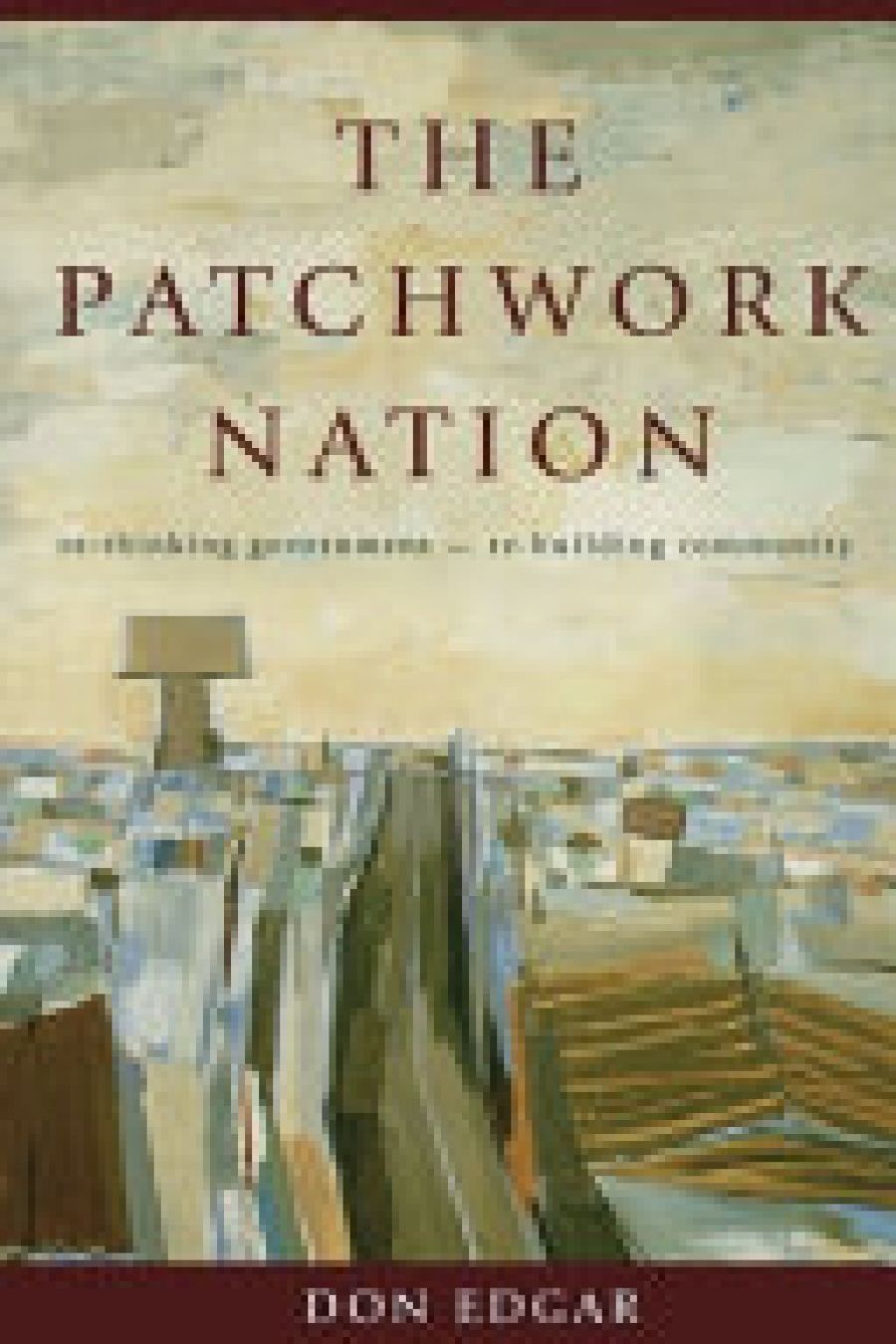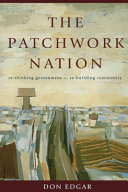
- Free Article: No
- Contents Category: Politics
- Review Article: Yes
- Article Title: A Coherent Quilt
- Online Only: No
- Custom Highlight Text:
Don Edgar has brought his wealth of experience in monitoring Australian society and its institutions to reflect on the changes now taking place and what needs to be done about them. The Patchwork Nation summarises the key aspects of social change, identifies the challenges associated with them (specifically for government) and sets out a coherent strategy for reform built around a strengthened role for local communities in responding to the forces of global economic change. This involves covering a huge amount of material. In this regard, the book succeeds in bringing together a number of disparate trends, ideas and themes, and makes them accessible to a wide audience. The book also contains a good deal of insight into the changes taking place. Yet there are questions to be asked about the extent to which some aspects of Edgar’s analysis are as compelling as the solutions he proposes. While many of the proposals developed in Section 3 are attractive, they do not always link with the forces for change described in Sections 1 and 2, and they are not always convincing.
- Book 1 Title: The Patchwork Nation
- Book 1 Subtitle: Rebuilding Community, Rethinking Government
- Book 1 Biblio: HarperCollins, $27.95 pb, 239 pp
- Book 1 Cover Small (400 x 600):

- Book 1 Cover (800 x 1200):

Although the scope of the book embraces many of the social changes that have emerged in the last three decades, the book’s primary focus is on the role of government, specifically on how government can reconcile the forces of globalisation and convergence with those of fragmentation and localisation. The basic argument is that global economic change is bringing about changes in the economy and the jobs it generates that in turn feed into how families function internally and interact with others in local community settings. Edgar argues that these economic changes are reinforcing the role of location in the determination of economic success, giving rise to a ‘new tribalism’ that threatens national identity by driving communities apart. Based on a potent combination of uncertainty, fear and inequality, this heightened sense of how personal identity derives from one’s ‘local patch’ requires a public policy response that goes beyond traditional party politics.
Central to Edgar’s approach is a new role for government to act as the thread that links the patchwork of increasingly diverse communities into a single coherent quilt. This will involve a central-state apparatus designed to redistribute personal and social resources to offset the trend to inequality (though in which dimension and by how much is not made clear), combined with a ‘massive decentralisation of administrative staff’ designed to facilitate the regeneration of local communities. These ideas resemble the original social democratic project that foundered on the altar of neo-liberalism and failed to garner public support, at least where it mattered — in the polling booth. Edgar argues that the new institutional structures will need to be ‘flexible, adaptable, self-managing and entrepreneurial’. While it is difficult to disagree, key questions remain as to how this can be effected.
As the book grapples with this question, it brings out the strengths of Edgar’s experience and insight, but also reveals some of the weaknesses of the underlying analysis. On the positive side, there is much to be gained from studying the examples of local community-building and democratic engagement in the later chapters, where the author’s intellectual energy, breadth of experience and clarity of exposition make for exhilarating and thought-provoking reading. The emphasis in Chapter 13 on the role of education in reconciling national and local needs is surely right, and many innovative and practical ideas are developed to promote this conjunction. However, the fact that these ideas have been successfully implemented in some communities does not imply that they are right for all communities. We need a far better understanding of how communities work before these ideas can be seen as a panacea. The idea of what constitutes a community is itself subject to dispute (as any One Nation supporter will affirm) and the ‘one size fits all’ notion of community can be as misleading as it has proved to be in relation to the provision of community services.
Although Edgar recognises that many of the forces driving the fears are economic in origin, his diagnosis of what these forces imply lacks conviction. Often, trends are juxtaposed with no attempt to unravel cause and effect or to identify the key drivers of change. He is critical of the role that the neo-liberal approach has given to the market, but this criticism seems at times misplaced. While it is true that market forces pay no heed to the social consequences of their operation, this is an argument for appropriate intervention and/or regulation by the state, rather than a case for rejecting the market itself. Edgar implicitly recognises this in later chapters. He cites many examples where increased reliance on impersonal market forces would have produced better outcomes than those generated by protection and the politics of self-interest.
This might seem like a trivial point, but it is not. The role of market and state in the new global economy lies at the heart of the issues addressed in this book. Don Edgar has produced a stimulating diagnosis of the forces that are pulling Australian society apart, and the case he makes for government to play the key role in rebuilding the social fabric is unquestioned. What is less clear is whether his emphasis on the need to ensure that we build upwards from local communities is any more relevant now than it has been throughout history.


Comments powered by CComment